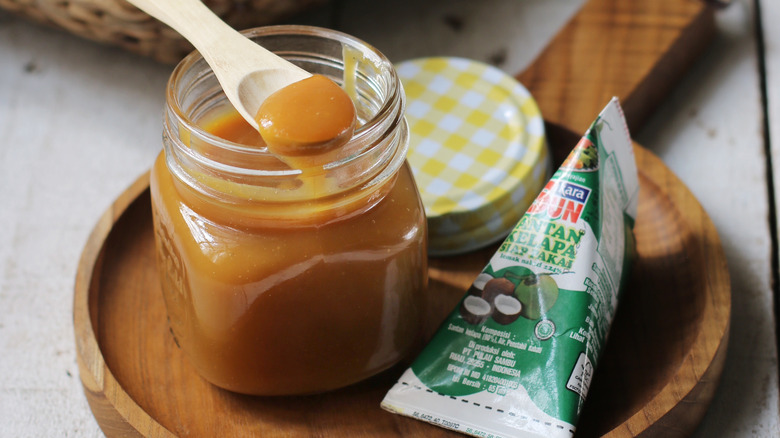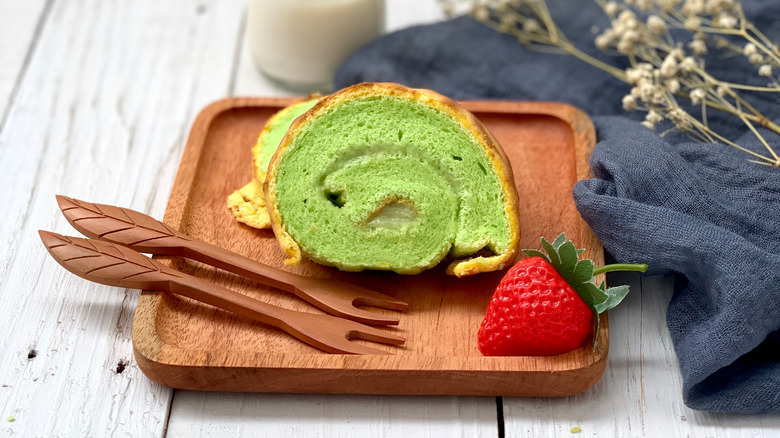Kaya Jam Is The Underrated Condiment You'll Want To Slather On Everything
It might not usually come in an eye-popping color like other fruit jams, but kaya jam's appearance belies an irresistible nutty sweetness. Made from coconut milk or cream, eggs, and sugar, it's a popular spread across Southeast Asia where it's frequently enjoyed at breakfast and afternoon tea.
With its name derived from the Malay word for "rich," silky smooth kaya jam is subtly indulgent. When made with fragrant pandan extract, it gets hints of vanilla along with a light jade color. This variant is called Nonya kaya, whereas the classic golden-brown one is referred to as Hainanese kaya. Some manufacturers also add honey so the jam gets another layer of sweetness. Kaya jam is usually spread on thin toast and layered with a pat of salted butter. Its lightly fluffy consistency complements the bread's crunchiness, making each bite of kaya toast a delightful play of flavors and textures. Typically served with either kopi (coffee) or teh (tea), kaya toast is also served with soft-boiled eggs in Singaporean coffee shops. Diners season the runny yolks with dark soy sauce and white pepper and then dip their kaya toast into them to enjoy the savory-sweet contrast in every bite.
Kaya jam's popularity has led to different versions of the classic kaya toast. A popular innovation is kaya French toast, in which the condiment is spread on thick bread that has been fried in an egg mixture.
Kaya jam can be enjoyed as more than just a spread
Since coconut milk and pandan have relatively mild flavors compared to other fruits used to make jams, kaya jam's taste makes it a great spread for a variety of breads, even those that are quite sweet. You can also switch toasted white bread for others with very different textures, like a baguette, a croissant, or a pan de sal. The crust will keep your kaya sandwich from getting too soggy from the combination of jam and butter. Pair this spread with peanut butter or cheese slices, too, for another wonderful, lightly salty balance.
Because of its custard-like texture, kaya jam can be used to replace custard when you're making desserts and pastries. Mix it into your pancake batter and use it as a pie or donut filling. Make kaya buttercream, too, and be surprised at what it adds to your traditional vanilla or chocolate cake. You can also flavor your ice cream, frozen yogurt, smoothies, and milkshakes with it. Even simpler, dip toasted bread sticks and saltine crackers in kaya jam for a quick and tasty snack.
You can find this product in Asian grocery stores. Be sure to read the label, though, since different Asian countries come with their own version of coconut jam. Thailand's, for example, called sangkhaya, looks more like a pastry cream than a jam while the Philippines' version, the syrupy minatamis na bao, is made with coconut milk and sugar but without eggs.

